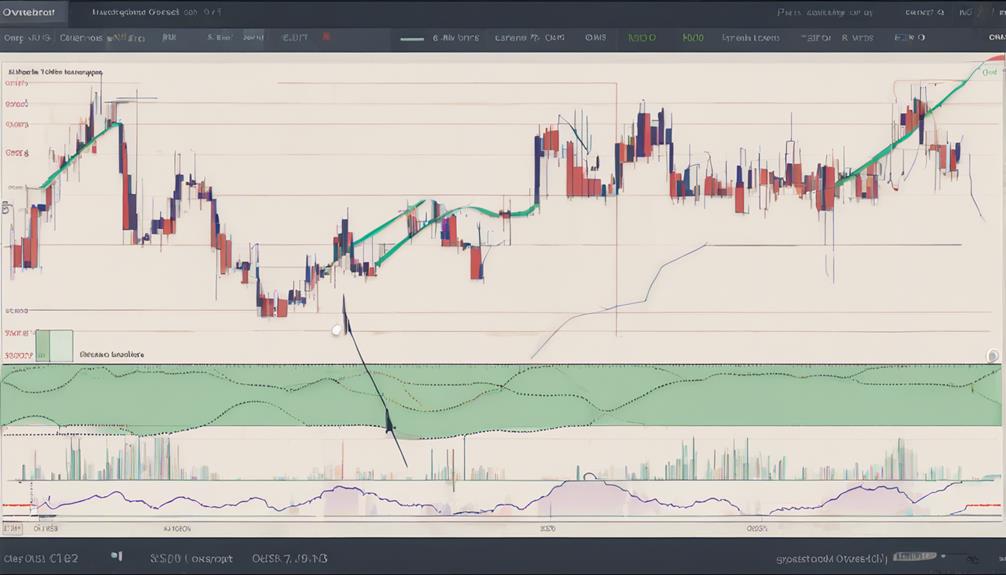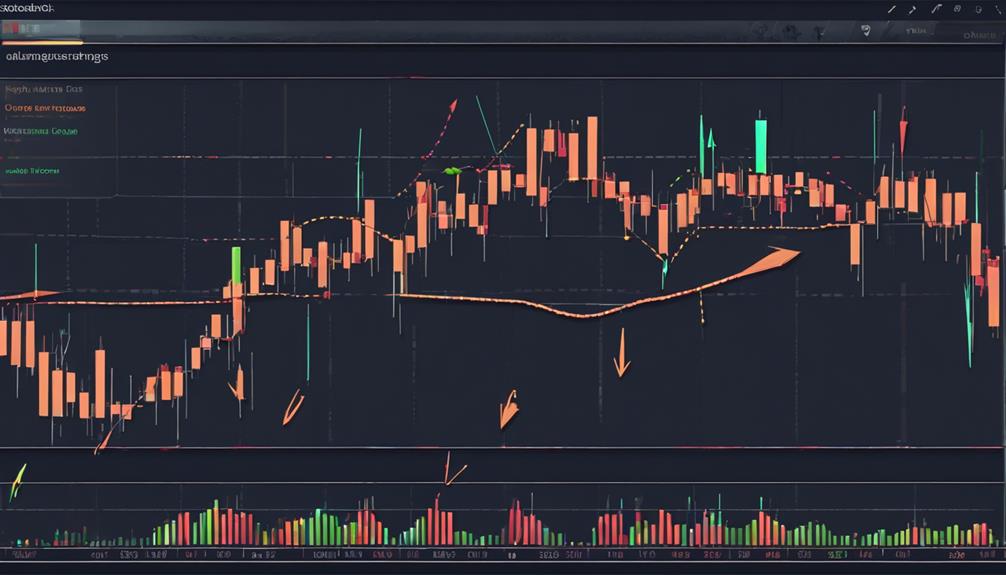When it comes to deciphering Stochastic Oscillator signals, think of it as navigating a complex maze with a flashlight in hand. Understanding the three best methods to decode these signals can be the key to unlocking profitable opportunities in the market.
By shedding light on overbought and oversold levels, recognizing trend changes, and identifying divergences, you can gain a comprehensive understanding of market dynamics that may guide your trading decisions.
So, are you ready to enhance your trading skills and potentially boost your success in the market?
Interpreting Stochastic Oscillator Signals
When interpreting stochastic oscillator signals, traders rely on specific thresholds to gauge potential market conditions and trading opportunities. Stochastic oscillator readings above 80 indicate overbought conditions, signaling a possible price reversal.
Conversely, readings below 20 suggest oversold conditions, hinting at a potential bounce back in prices. Traders also pay close attention to crossovers between the %K and %D lines for buy or sell signals.
Divergence between the price action and the stochastic oscillator can indicate a forthcoming trend reversal or a weakening momentum in the current trend. Adjusting the settings of the stochastic oscillator can help traders align the signals with their specific trading goals and adapt to different market conditions efficiently.
Identifying Overbought and Oversold Levels

Identifying overbought and oversold levels on the stochastic oscillator involves analyzing %K values above 80 and below 20, respectively. When %K rises above 80, it signals overbought conditions, indicating potential selling opportunities for traders to capitalize on.
Conversely, %K falling below 20 indicates oversold levels, suggesting potential buying opportunities in the market. Recognizing these levels is crucial as they can help traders anticipate price reversals and make informed decisions based on the signals provided by the stochastic oscillator.
Recognizing Trend Changes and Divergences

Recognizing trend changes and divergences on the stochastic oscillator plays a crucial role in guiding traders towards strategic adjustments and informed decision-making in volatile markets. Divergence, whether bearish or bullish, indicates potential shifts in market direction.
Bearish divergence occurs when the price reaches a high while the oscillator shows a low, suggesting a possible downward trend. Conversely, bullish divergence is identified when the price hits a low while the oscillator indicates a high, signaling a potential upward movement.
Spotting these divergences helps anticipate reversals or weakening trends in the market, allowing traders to adjust their strategies and positions accordingly. By recognizing divergences early on, traders can better navigate market fluctuations and make more effective trading decisions.
How Can Understanding Stochastic Oscillator Signals Improve Technical Analysis?
Understanding stochastic oscillator signals in analysis can greatly improve technical analysis. By utilizing this powerful indicator, traders can identify overbought and oversold conditions in the market, leading to more effective entry and exit points. Stochastic oscillator in analysis provides valuable insight into market momentum and can enhance overall trading strategies.
How Can Moving Averages Help in Decoding Stochastic Oscillator Signals?
Moving averages play a crucial role in exploring stochastic oscillator strategies. By using moving averages, traders can better understand the strength and direction of stochastic oscillator signals. They can help smooth out price data and identify potential buy or sell signals more effectively.
Frequently Asked Questions
How Do You Interpret the Stochastic Oscillator?
When interpreting the stochastic oscillator, consider overbought levels above 80 as potential reversals and oversold levels below 20 as signs of rebounds. Look for crossovers between %K and %D lines for buy or sell signals.
What Is 5 3 3 Stochastic Settings?
In the 5 3 3 Stochastic settings, %K is set at 5, %D at 3, and smoothing at 3. This configuration creates a fast and responsive Stochastic Oscillator, ideal for short-term trading and quick market movements.
Which Indicator Works Best With Stochastic Oscillator?
For effective analysis with Stochastic Oscillator, Relative Strength Index (RSI) is an ideal complement. RSI targets overbought/oversold levels while Stochastic gauges momentum. Together, RSI and Stochastic provide a well-rounded perspective on market conditions.
How to Read Stochastic Fast?
To read Stochastic Fast effectively, focus on its %K values above 80 for overbought and below 20 for oversold conditions. Watch for crossovers with %D line to identify buy/sell signals. Monitoring Fast %K helps detect potential market trend changes.
Conclusion
In conclusion, mastering the art of decoding Stochastic Oscillator signals is like navigating a ship through turbulent waters. By keeping a close eye on overbought and oversold levels, identifying trend changes, and spotting divergences, you can steer your trading strategy towards success.
Just like a skilled captain relies on navigational tools to guide the ship safely to its destination, utilizing these methods will help you navigate the unpredictable seas of the market with confidence and precision.
